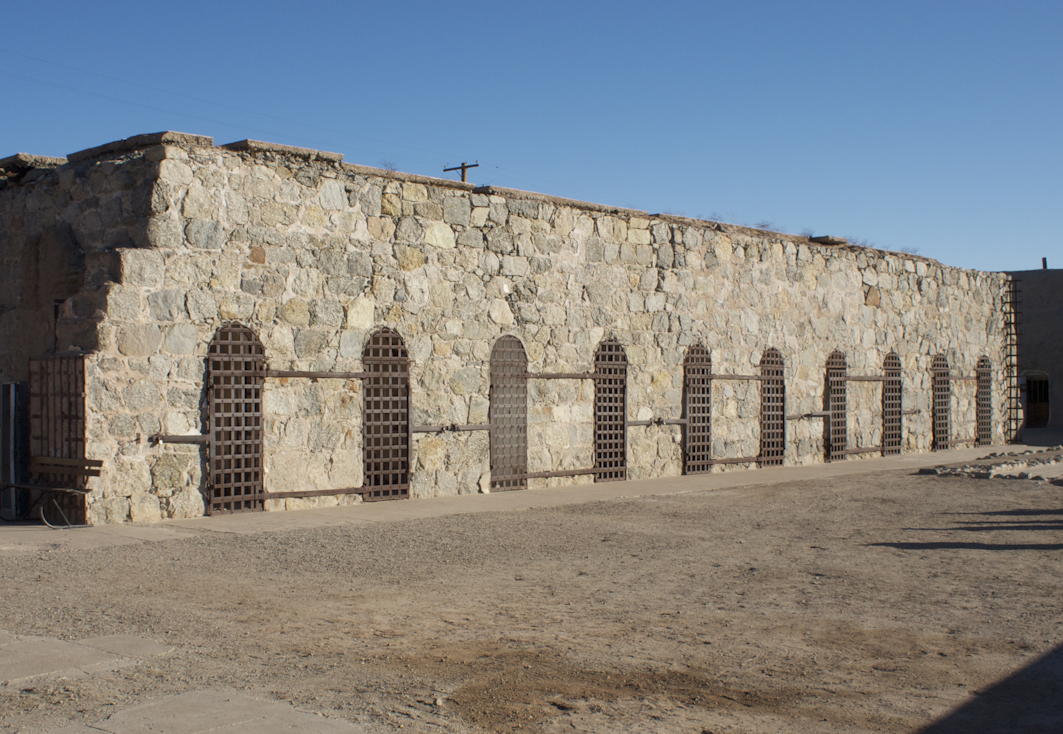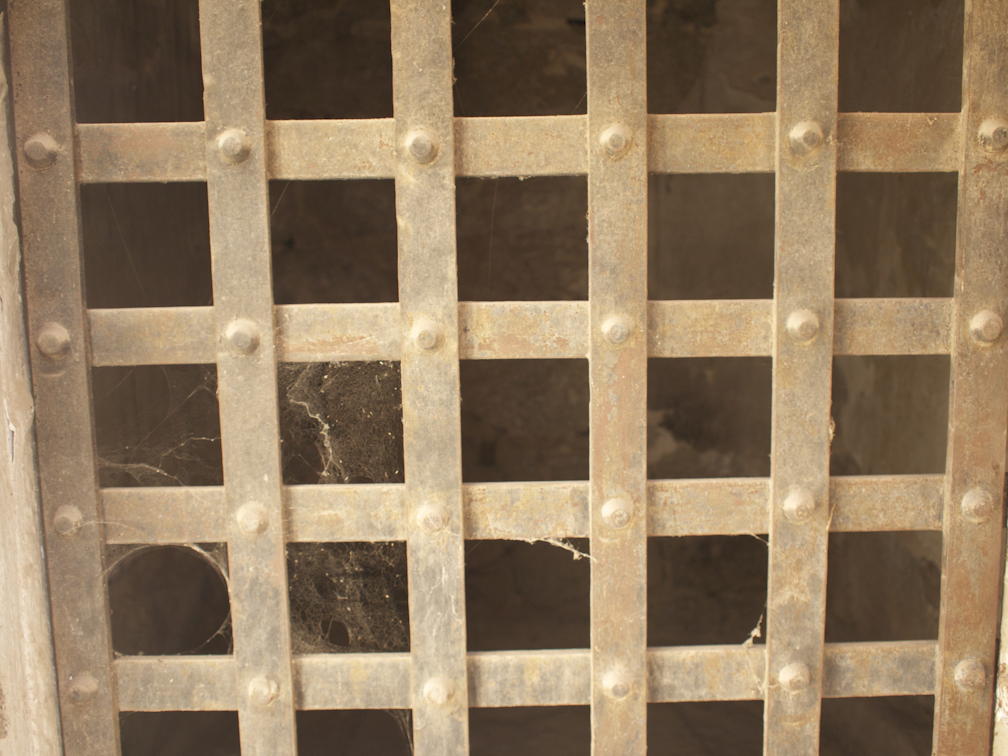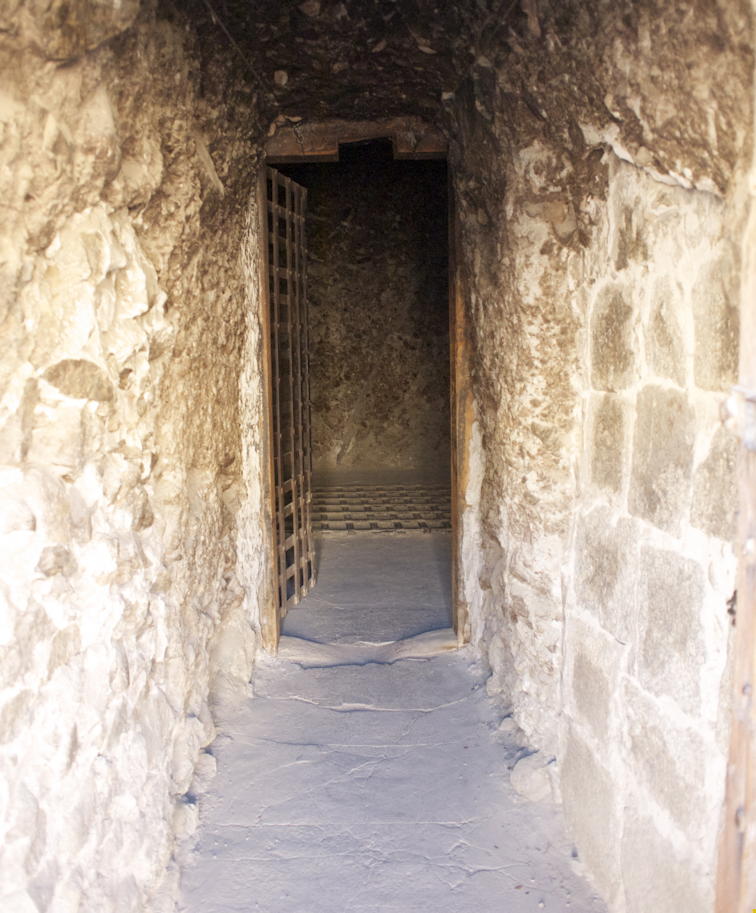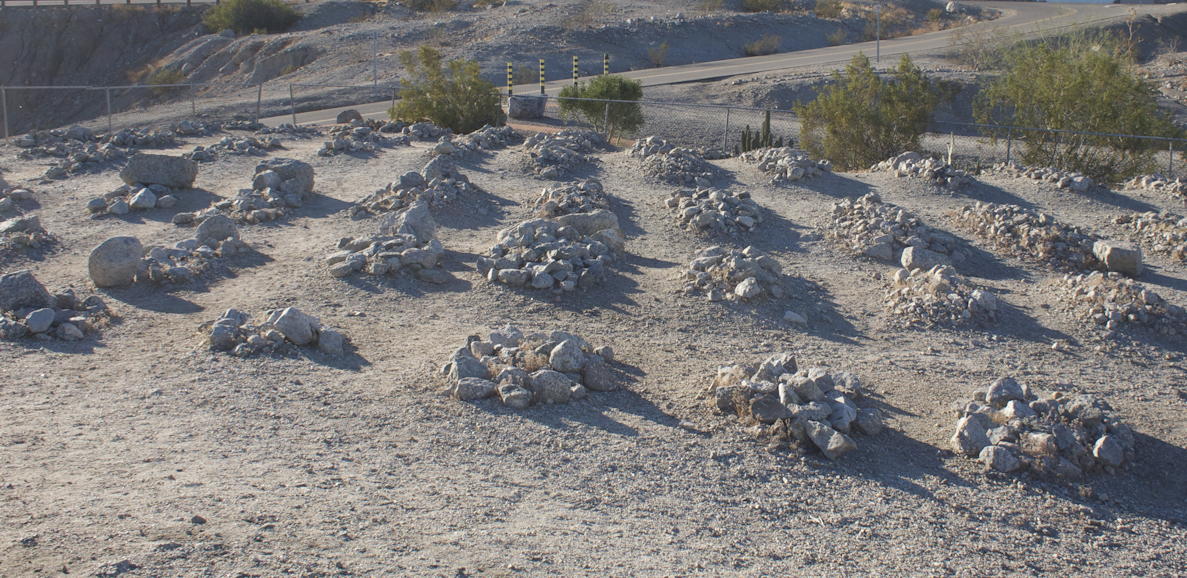The Yuma Territorial Dungeon
I went to Yuma yesterday for a day trip from San Diego. Besides having some good pozole, I also went to the Yuma Territorial Prison State Historical Park. The prison—which is almost certainly the eponymous but not seen prison from 3:10 to Yuma•—got me to thinking about dungeons. With its multi-purpose buildings now fallen into disrepair, its on-site cemetery with semi-marked graves, its history of violence and its modern conveniences, it’s a lot like some fantasy RPG dungeons.
It first hit me looking at the guard tower. It didn’t start as a guard tower—it started as a water tank. To keep the water from evaporating, they built a cover for it. Once they had a cover, it was basically a tower with a good view of the area, so guards started using it as a lookout. So they built a roof on top of the “platform”. And it worked so well that they built a glassed-in and heated guard stand with sleeping quarters! The tower continued to find uses after the prison shut down, including as a Civil Defense lookout during World War II.
A lot of history in that one section of the “dungeon”. History that will leave behind different kinds of things for player character adventurers to discover. It all echoes what I have in The Adventure Guide’s Handbook:
When describing anything, especially when writing flavor text, consider the purpose to which the structure or room was put. Consider what it was last used for. Think about its light sources, and consider its state of repair. How much natural degradation has occurred, how much has occurred from animal sources, and how much from the raids and ransackings of humans or other intelligent creatures.
In other words, who built it? Why? Why was it abandoned? And what purposes has it been used for since?
Many gaming dungeons nowadays are less dungeon than underground workshop/village. Both the Lost Castle of the Astronomers and Illustrious Castle have “dungeons” underneath them, but those dungeons were built to provide secret storage and work areas more than to provide space for prisoners. The Yuma Territorial Prison is dungeon both above and below ground.
The area of Yuma is built up where it is because there’s an easy crossing of the Colorado River nearby. According to Richard Crawford in The Scalp Hunters:
The Yuma Crossing at the junction of the Colorado and Gila Rivers was once a key overland gateway to California. When the Gold Rush began in 1848, thousands of emigrants hurried across the hot Sonora Desert and forded the quarter-mile wide Colorado River at Yuma on San Diego County’s eastern border.

These specially secured cells were for the “incorrigible” prisoners. Wonder what’s still imprisoned there, yearning for freedom after decades of brooding?
The prison itself has a history worthy of a good gaming dungeon. It’s built on a hill—Prison Hill, of course. Some of it was built up, and some of it was dug out of the hill. It was (like Stonehell Dungeon) built by the prisoners, who then “moved in”. The prisoners dug the punishment dark cell and, presumably, some of them ended up using it later.
Despite that, it was a relatively progressive prison, to the point that the townsfolk called it a “Country Club”. It had electricity, the aforementioned water, a hospital, a prison band, and a (for the time) good library. It had its own dynamo that generated enough electricity to sell some back to the town at night. One thing it did not have, however, was air conditioning (though it did have forced air circulation), and the inmates called it a hell hole.
There were prison breaks and famous prisoners and everything one expects from a good prison—including tough superintendents and their active wives. Madora Ingalls, a wife of one of the superintendents, raised funds for a library, among other many efforts on behalf of the prisoners. So, the story goes, they liked and respected her. Then, one day, during a prison break, the escaping prisoners shot the guard manning the gatling gun; they shot the guard who rushed to replace the gunner. They rushed towards the unguarded gates! And then the gatling gun opened up again: it was Dora Ingalls, and she pinned the escaping prisoners down until the other guards could round them up again.
There were even mechanical puzzles for adventurers to figure out. In its realistic version, there are a series of levers on the side of the “incorrigible ward”, parallel to the cell doors, that could be pulled to lock or unlock the doors for the night. In the fantasy version, of course, those rusted levers could enable or disable traps, or set into motion events that will later prove an obstacle to the adventurers. Or they could just open the doors—and let something out that’s been held captive for a hundred years.
One of the interesting features of the cells is that each of them had a heavy iron loop in the center of the floor. If a prisoner needed to be tied down, they’d be chained in manacles to that loop.
The punishment cell was sort of for solitary confinement, except that there were few attempts at keeping it solitary. When someone needed special punishment beyond manacles, they were locked into a cage within that deep, dark cell. If more than one person needed punishment, all were stuffed into the cell. Two prisoners got into a fight and needed a time out? Both were consigned to the hole, at the same time. According to the guide, the only attempt at keeping prisoners in the hole separate were that if there were females in the hole, there were no males in the hole.
Entrance to the hole is through a thin corridor carved into the hill. You could barely swing a longsword in there, let alone a two-hander. And take a look at that doorsill. It’s indented by a good three inches in an inverted bell curve. How many prisoners were dragged over that threshold, already in chains?
And, speaking of thin passages, prisoners did indeed try to dig their way out. In the real thing, any such tunnels were fixed, but in a fantasy dungeon, who knows what tunnels might remain behind plastered-over cell walls?
The prison eventually closed; a few years after it closed, Yuma used it for their high school—an act that lives on in the town’s own nickname for their sports teams, “the Criminals”. During the twenties, it provided ad-hoc lodging for hoboes. Judging from the graffiti, it provided lodging for drifters well into the fifties. Part of it was destroyed when a railroad bridge was built through it across the Colorado River. And throughout that time it was raided by the nearby townsfolk for building supplies, leaving it in more severe disrepair than mere time would have done. The roof, for example, is long gone, making it a lot easier for monsters to take up residence!
And the people who died are always a source for adventure inspiration! One superintendent committed suicide; some prisoners also did. Prisoners were killed by other prisoners; they were felled by tuberculosis, a common-enough malady even outside the prison. They died in prison escapes, and some escapees disappeared entirely.
Many of those who died were buried right at the prison, though you wouldn’t necessarily recognize it as a cemetery in its present state, at first glance:
Look around, and see if there are any dungeons near you for the stealing. I regret that I didn’t take a photo of the prison overview, but there’s no need to copy the prison exactly. It’s the ideas that drive us.
dungeon
- The Adventure Guide’s Handbook
- Weave fantasy stories around characters that you and your friends create. As a Gods & Monsters Adventure Guide you will present a fantastic world to your players’ characters: all of its great cities, lost ruins, deep forests, and horrendous creatures.
- Illustrious Castle
- The Order of Illustration once guarded remote Biblyon. Today, Illustrious Castle is deserted, long-since looted of anything valuable. For second to third level characters.
- Lost Castle of the Astronomers
- This dungeon crawl is suitable for three to six characters of first to third level. This is the basic adventure that Charlotte, Gralen, Sam, and Will went through in The Order of the Astronomers.
- Stonehell Dungeon: Down Night-Haunted Halls: Michael Curtis (paperback)
- Looks like a lot of fun, and takes advantage of the sparseness of old-school adventures to make it easier to get a bird’s-eye view of the adventure.
prisons
- 3:10 to Yuma• (DVD)
- I would not call this “the best western since Unforgiven”, but Russell Crowe and Christian Bale do a great job in this remake.
- 3:10 to Yuma• (DVD)
- I haven’t seen the original, but it looks like I should.
- The Ingalls Inquirer Vol. 1-10
- “A lifer, Chico Viscaya by name, worked his way leisurely to one of the guards, then struck swiftly. Metal flashed in the sun, and the guard fell, a steel spike buried deep in his right breast. Another felon grabbed the slain guard’s rifle and fired point blank at the second guard inside the bull pen, killing him too.”
- The Scalp Hunters At The Yuma Crossing: Richard Crawford at San Diego Yesterday
- “When I was at San Diego, a great many complaints were made by citizens there, and persons arriving from the Gila, of a gang of lawless men who had established a ferry over the Colorado, where not only they practised the greatest extortions, but committed murders and robberies…”
- Yuma Territorial Prison 1875-1909: Bob Foster
- “Was the Yuma Territorial Prison really a God-forsaken outpost of inhumanity western writers and movie makers would have us believe? As we explore the true history of the infamous prison perhaps we can learn the truth.”
- Yuma Territorial Prison State Historic Park
- “On July 1, 1876, the first seven inmates entered the Territorial Prison at Yuma and were locked into the new cells they had built themselves. At Yuma Territorial Prison State Historic Park walk through the actual strap iron cells and solitary chamber of Arizona Territory’s first prison.”
More dungeon
- Gods, Monsters, Spells, and One-Page Dungeons
- Over the last few weeks I’ve run across several free compendiums: monsters, gods, and simple dungeons. Space Age Sorcery, Petty Gods, Lord Gwydion’s Beast of the Week Collection, Varlets and Vermin, and the 2013 One Page Dungeon Contest.
More gaming history
- The Cult of the Cult of Gygax™
- It was never a secret to us back in the day that the staff at TSR played the game themselves, and that they played the game with custom rules and custom worlds.
- Was table-top gaming inevitable?
- Gods & Monsters rolls an 18 for age today, pioneer game writer Greg Stafford died two weeks ago, and stories about the early days of gaming has me wondering, was the discovery of table-top gaming a perfect storm, or was it inevitable?
- The First Language
- Scholars once believed that, or seriously discussed whether, Hebrew was the first language of mankind. In a fantasy game, there really can have been a first, holy language of the gods.
- Currency and economic policy in the middle ages
- Prices, credit, and currencies. If you know the system, you could make a mint!
- House of Gold, House of Passages
- The emperor Nero’s House of Gold sounds like the backstory of a great megadungeon right under the adventurers’ sandaled feet.
- 18 more pages with the topic gaming history, and other related pages



